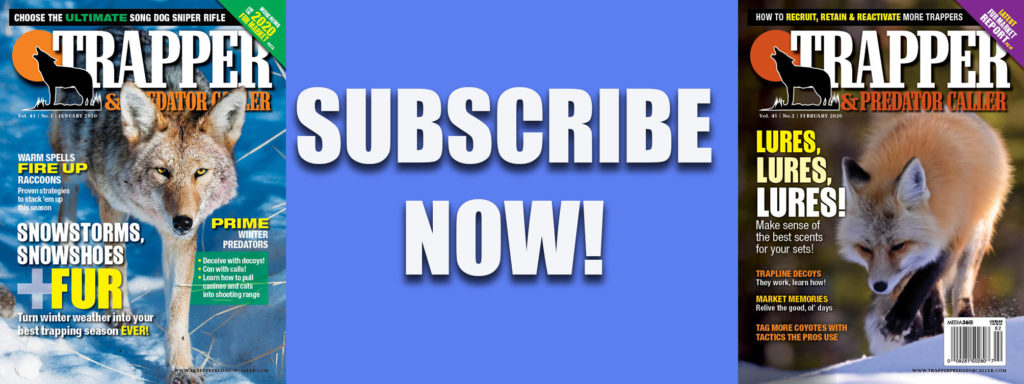
Trapper & Predator Caller Field Editor Serge Lariviére recently had the chance to interview expert wolf trapper Gordy Klassen. The renowned figure from DeBolt, Alberta, is known throughout the West and across Canada for his wolf trapping clinics and seminars. He is the owner of Trapper Gord trapping supply business (www.trappergord.ca), founder of the Trapper Gord Wilderness College in Alberta and president of the Alberta Trappers Association for almost 10 years. Klassen took a few minutes of his busy schedule to discuss his wolf trapping methods and philosophy.
The portion of the interview below deals with sets for wolf trapping. The full interview appears in the December 2013 Trapper & Predator Caller issue.
Serge Lariviére: OK, so we have a location, say a junction of an old forestry road and a series of beaver ponds. We have seen wolf tracks in the snow there before. We know wolves come here. What next? Snares or footholds?
Gordy Klassen: Both have merit, and both should be used if legal in your area. If using footholds only, make enough sets for every pack member.
SL: Do you gang set in close like most trappers do for foxes and coyotes?
GK: Ah, here we start doing things different. Wolves are a little more paranoid than coyotes or foxes. I space my sets just far enough so that when one animal is caught, the next set is out of sight. After a pack member is caught, other wolves run out of there fast, and then stop out of sight to call the member back. Then, they slowly approach while remaining out of sight to try and understand why this member is not following. This is where the other sets come in.
SL: So five to seven foothold sets is common for you?
GK: Sure, and snares if I can also. Footholds should be spaced so each catch is just out of sight of the next one. This is how you can maximize your catch or catch multiple members of a single pack when they come through. If you set too close, you might lock on to one or two members, but you’re unlikely to catch any more. By spacing sets out, the first animal you catch becomes the ultimate attraction for the remaining pack members, and multiple catches are almost assured.
SL: What about specific foothold sets?
GK: My No. 1 set is a big, high-visibility step-down dirthole set. I like lots of dirt thrown around and a big hole with the pan about 16 inches from the lower lip of the hole.
SL: All sets are dirtholes?
GK: No, I also use flat sets using skulls, blocks of charred wood or simply urine posts. Wolves are curious, and objects that stand out attract them a lot. I have used natural objects, but sometimes I might use a discarded oil can, pop can, anything that the wolves might have seen once or twice but not paid attention to. When that same can smells of lure or aged beaver meat, wolves will approach out of sheer curiosity.
I won’t make five sets alike if I set five traps. I try to vary. Each wolf has its own personality, and some are bolder or more curious than others. I vary my sets from all natural to very unusual, and I have caught wolves in all types.
Serge Lariviére’s full interview with Gordy Klassen appeared in the December 2013 issue of Trapper & Predator Caller.
You can pick up a copy of the digital issue on www.ShopDeerHunting.com. Or if you’d like to subscribe to Trapper & Predator Caller, please visit the subscription page on our website.
The Wolf’s Place in Wildlife Management
________

